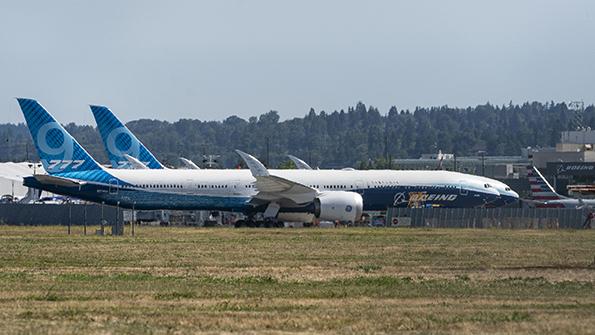Boeing 777x
Posted : admin On 3/24/2022Boeing has revised its development schedule for the 777X to reflect a late 2023 first delivery and resumption of shipments of the 787 Dreamliner late in the first quarter as the company’s widebody programs continue to address technical snags and market softness. Speaking Wednesday during the company’s fourth-quarter 2020 earnings call, Boeing CEO David Calhoun explained that the 777X delay centers on three main factors, leading with an updated assessment of global certification requirements influenced by the 737 Max grounding.
- Boeing 777x As regulators prepare to weigh in on 737 MAX, FAA's global dominance fades In March 2019, when the second MAX crash in five months brought the death toll on the recently introduced Boeing Co model to 346 people, China quickly grounded the airliner, sparking a cascade of flight bans around the world.
- 2 days ago Boeing Co’s biggest 777X customer is weighing whether to swap as many as a third of its orders for the smaller 787 Dreamliner, said a person familiar with the matter, adding to the uncertainty.
- After months of rumors, the 777X has officially joined Boeing’s BA -1.4% list of major woes. The company included a $6.5 billion charge in its fourth-quarter earnings related to the wide-body jet.


“We’re working closely with global regulators on all aspects of 777X development,” said Calhoun. “This involves listening to all their feedback and applying lessons learned from our experiences on the 737 Max program recertification and applying it to our 777 certification plans. It also involves making prudent design modifications as necessary to meet the various global regulators' expectations.”
As part of its assessment, Boeing decided to make “certain modifications” to the aircraft design involving both software and hardware changes to the actuator control electronics, he explained, reflecting the company’s “current judgment of global regulators compliance expectations.”
Calhoun also named downward long-term expectations for passenger traffic brought about by the Covid pandemic on long-haul routes, in particular, shifting 'to the right' the anticipated replacement wave of widebodies in the capacity range of the 777X. Finally, the 777X’s customers have asked for delivery deferrals directly due to their projections for their own fleet needs over the coming few years.
“These broader market factors, coupled with our conversations with our customers about preferred delivery timing, informed our current assumptions,” noted Calhoun. As a result, Boeing took a $6.5 billion accounting charge during the fourth quarter and changed its program assumptions to reflect a 50-unit reduction in program accounting quantity, from 400 to 350 airplanes. Still, Boeing projects a market for 1,500 large widebodies in the category of the 777X over the next 20 years.
Separately, continuing inspections and rework of body join on 80 Dreamliners in inventory has forced the company to delay the re-start of deliveries of that widebody from the end of last year to “late in the first quarter” of this year, reported Calhoun. Last September Boeing found that mechanics clamped together certain components in the horizontal stabilizer with greater force than required by engineering specifications. The mistake could result in improper gap verification or shimming as workers assemble the component. That issue further slowed deliveries as the company performed special inspections to address imperfections in fuselage skins and shimming problems within some of the airplanes’ aft fuselages first discovered in 2019. On Wednesday, Calhoun didn’t identify the exact location of the body join problems that led to a halt in deliveries in the fourth quarter, noting only that they didn’t present a safety-of-flight issue.
“Since last quarter, we've expanded the scope of those inspections, including work done at our supplier partners,” he said. “Our assessment shows that none of the issues identified represent safety-of-flight concerns.'
Boeing 777x Aircraft
“We've been able to determine the resolution for the majority of previously identified areas, including our major join sections,' added Calhoun. 'In some cases, this requires inspections and rework while in other areas, no further action is required. We've made good progress and are now completing an analysis on a few remaining areas to validate the next steps. As we see it today, this work may take a few more weeks, but we will provide our engineers the time they need to complete that analysis. We are implementing changes in the production process to ensure newly built airplanes, meet our specifications and do not require further inspection.”
Boeing's newest aircraft, the Boeing 777X, flew for the first time in January after lengthy delays. It's the largest twin-engine jet in the world and Boeing's latest new aircraft to fly since the.
Boeing 777x Orders
Calhoun further confirmed that Boeing would not deliver any 787s this month and just a few, if any, in February. Boeing plans to reduce production to five airplanes a month in March, when it fully consolidates final assembly to its plant in Charleston, South Carolina.